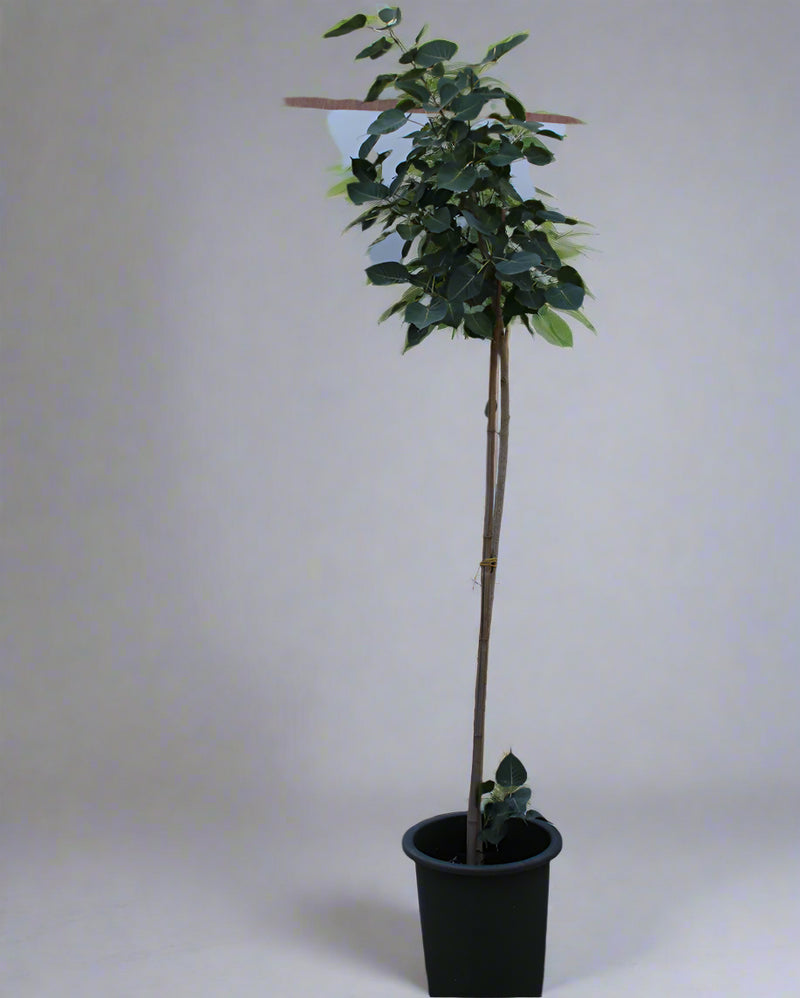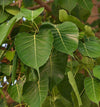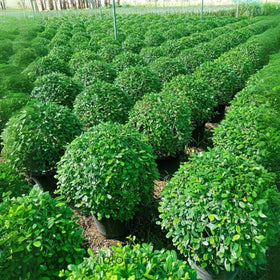Collect your items now.





Ficus religiosa 3.0-3.5m Ht, 2 m CS, 2-3cm Dia
Arabic Common Name: شجرة التين الهندي, شجرة البودي, شجرة التين المقدس
Product Description: The Ficus religiosa, commonly known as the sacred fig or Bodhi tree, is a large, fast-growing, deciduous tree native to the Indian subcontinent. It holds immense religious and cultural significance in Hinduism, Buddhism, and Jainism. The tree is easily identifiable by its heart-shaped leaves with long, tapering tips and its smooth, light grey bark. The leaves rustle beautifully in the slightest breeze, creating a unique sound. Due to its size and spiritual importance, it is often planted near temples, in parks, and as a shade tree.
Key Features:
-
🌳 Significant Size: Can grow into a massive tree with a wide-spreading canopy, providing excellent shade.
-
🍃 Unique Leaves: Distinctive heart-shaped leaves with an elongated tip that moves gracefully in the wind.
-
🌿 Spiritual Significance: Considered sacred in several religions, particularly Buddhism, as it is the tree under which Siddhartha Gautama attained enlightenment.
-
💨 Air Purification: Known to be a good air purifier, absorbing pollutants from the environment.
-
☀️ Drought Tolerant: Once established, it is relatively drought-tolerant and can thrive in hot climates.
Please Note: The information provided on this website is for general informational purposes only. While we strive to ensure all details are accurate, we cannot guarantee the complete accuracy, reliability, or suitability of the information. The product images and descriptions are for illustrative purposes and may vary slightly from the actual product due to manufacturing processes, natural variations, or screen display settings.
Disclaimer of Warranties
All products are provided "as is" and "as available." We make no representations or warranties of any kind, express or implied, regarding the use or results of this website or the products sold. This includes, but is not limited to, implied warranties of merchantability, fitness for a particular purpose, and non-infringement.
Limitation of Liability
In no event will our company be liable for any damages, including direct, indirect, special, incidental, or consequential damages, arising out of the use or inability to use the products purchased from this site. This applies even if we have been advised of the possibility of such damages. Your use of this site and its products is at your own risk.
Intellectual Property
All content on this website, including text, graphics, logos, images, and product designs, is the property of our company or its content suppliers and is protected by international copyright laws. Any unauthorized use of these materials is strictly prohibited.


